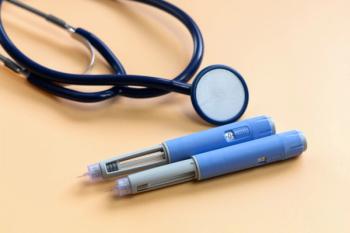
- June 2020
- Volume 3
- Issue 2
Diabetic Eye Conditions: When Tight Glucose Control Fails, Treatments Are Available
Visual impairment confers a tremendous psychosocial burden, yet up to half of atrisk patients skip annual eye examinations. symposium held in conjunction with the Asembia Specialty Pharmacy Summit, noting that up to 17% of cases of blindness can be attributed to diabetic eye disease.
DIABETIC EYE DISEASE is a significant concern for specialty pharmacists. This disease is subdivided into diabetic macular edema (DME) and diabetic retinopathy (DR), with the latter affecting 1 in 3 of this country’s 30 million people with diabetes. Duration of diabetes is a significant risk factor to developing DR and DME. Visual impairment confers a tremendous psychosocial burden, yet up to half of atrisk patients skip annual eye examinations.
Joshua Mali, MD, covered DR at a virtual symposium held in conjunction with the Asembia Specialty Pharmacy Summit, noting that up to 17% of cases of blindness can be attributed to diabetic eye disease. Loss of vision is costly. Individuals who lose their vision or become blind incur medical costs that are almost twice those of non-blind individuals. The treatment team needs to include costs associated with vision loss when they consider treatment costs; although treatment may seem expensive, it is considerably less expensive than the consequences of vision loss.
Chronic hyperglycemia and hypertension trigger biochemical and physiological changes, resulting in microvascular damage and retinal dysfunction. The goal of treatment is to reverse vision loss, if possible, and to prevent further vision loss.
The primary approach should be prevention with tight control of blood glucose levels, blood pressure, and cholesterol, but treatments are also available. Mali presented 4 options for DR/DME that ophthalmologists generally have: (1) laser photocoagulation, (2) anti-VEGF agents, (3) injectable corticosteroids, or (4) vitrectomy. The anti-VEGF agents have become standard of care. Aflibercept and ranibizumab were equivalent with changes in visual acuity for individuals with worse baseline vision; bevacizumab was less effective than aflibercept in patients with worse baseline vision. Of note, ranibizumab and afliberept are FDA approved to treat DME and reverse the effects of DR in patients. Studies comparing aflibercept, ranibizumab, and bevacizumab have found no statistical difference in serious adverse effects.
Corticosteroids are another important class of medications to treat DME. Fluocinolone acetonide intravitreal implant and dexamethasone intravitreal implant are 2 options for patients with DME that focus on addressing the inflammatory cascade, which is a known mechanism of DME. Mali discussed emerging treatment options for patients with DME. A phase 3 clinical trial called PAGODA is being conducted to investigate ranibizumab in a Port Delivery System (PDS) in patients with diabetic macular edema. The PDS is a refillable eye implant designed to continuously release medication over a longer period of time and allows patients to go up to 6 months between treatments.
Cari Pao, PharmD, MSHCM, MBA, indicated that the economic impact of DME is projected to reach $4.1 billion by 2027, and intravitreal injections have propelled costs. The drugs for clinically significant DME have revolutionized treatment, but can cost roughly $11,204 per year.
Medicare bears much of the financial burden of DME as the condition usually occurs in people older than 65 years. Out-of-pocket (OOP) costs are a concern; Medicare patients who have a 20% co-pay end up with OOP costs exceeding $2000. Because of bevacizumab’s lower cost, some plans require patients to use it first.
Pao described the specialty pharmacist’s position as critical, especially when pharmacists monitor and encourage adherence, help patients select lifestyle changes, and focus on intensive diabetes control, which can reduce the likelihood of diabetic eye disease.
Articles in this issue
Newsletter
Stay informed on drug updates, treatment guidelines, and pharmacy practice trends—subscribe to Pharmacy Times for weekly clinical insights.






















































































































































































































